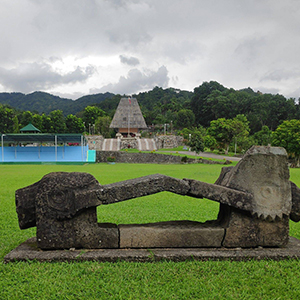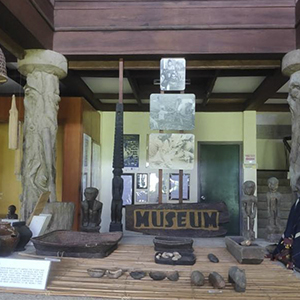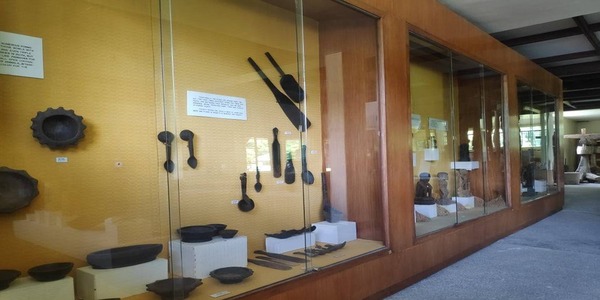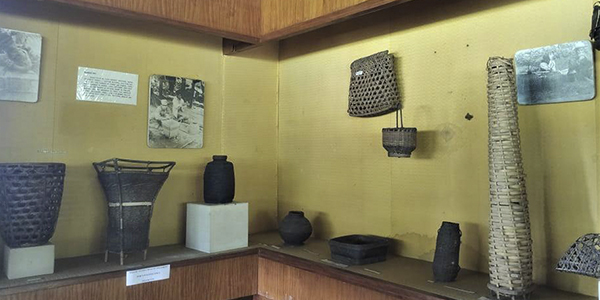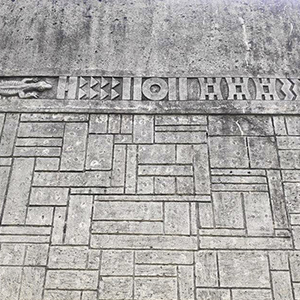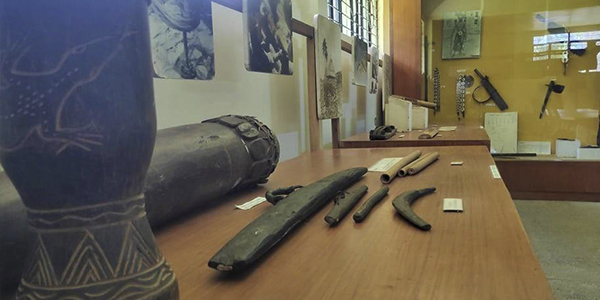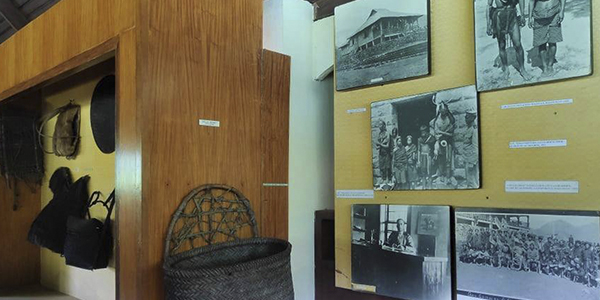Ifugao Ethnographic Exhibition |
|---|
The Ifugao Ethnographic Exhibition of the National Museum Cordillera features various Ifugao rice culture materials and other artifacts that reflect the Ifugao way of life. Household items, farming tools, ritual objects, musical instruments, woven baskets, war paraphernalia, carving tools, personal accessories and archaeological excavation finds are on display at the first and second floors of the museum.
The center display depicts a mumbaki, the Ifugao native priest and his ritual paraphernalia. Depending on the rituals (baki) to be performed, the priest needs a set of accessories called maamlag which may have areca nuts (moma), betel leaves (hapid), ricewine (bayah), rice gods (bulul), and the animals to be butchered as offering.
The Ifugao traditional house with its unique architectural design being boltless is also on display. It can be dismantled and re-assembled if it has to be transferred to another location.
The most recent addition to the gallery are the excavations from the Old Kiyyangan Village believed to be the earliest settlement of the Ifugao. The finds highly suggest that the oldest Ifugao community thrived on hunting wild animals and rice and taro cultivation. The excavations at the Old Kiyyangan Village are part of the Ifugao Archaeological Project, an undertaking of the Save the Ifugao Terraces Movement, Inc., Local Government Unit of Kiangan, National Museum of the Philippines, University of the Philippines-Archaeological Studies Program, and University of Guam.
The Ifugao Ethnographic Exhibition is one of the exhibits in the National Museum Cordillera, located in Baguio City, Philippines. It showcases the rich cultural heritage and traditions of the Ifugao people, an indigenous group known for their terraced rice fields and ancient culture.
The exhibit features various artifacts such as traditional clothing, weapons, tools, musical instruments, and household items that were used by the Ifugao in their daily lives. It also includes detailed information about their rituals, beliefs, and customs, as well as their unique practices in agriculture and architecture.
One of the highlights of the exhibition is the life-sized replica of an Ifugao house, which visitors can enter and explore. The house is constructed using traditional methods and materials, such as bamboo, cogon grass, and wood.
The Ifugao Ethnographic Exhibition is known for its comprehensive and interactive presentation of Ifugao culture. It provides visitors with a glimpse of the rich cultural heritage of the Ifugao people and highlights the importance of preserving their traditions for future generations.
